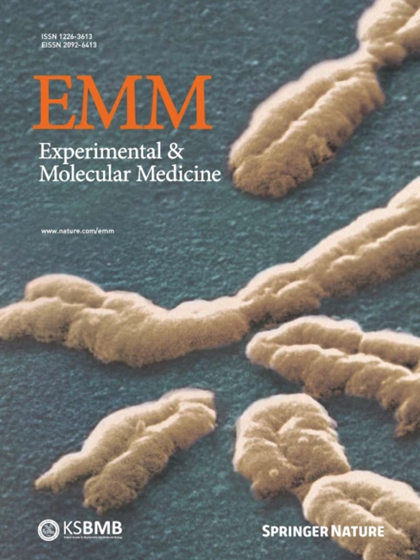GluN2B-mediated regulation of silent synapses for receptor specification and addiction memory
IF 9.5
2区 医学
Q1 BIOCHEMISTRY & MOLECULAR BIOLOGY
引用次数: 0
Abstract
Psychostimulants, including cocaine, elicit stereotyped, addictive behaviors. The reemergence of silent synapses containing only NMDA-type glutamate receptors is a critical mediator of addiction memory and seeking behaviors. Despite the predominant abundance of GluN2B-containing NMDA-type glutamate receptors in silent synapses, their operational mechanisms are not fully understood. Here, using conditional depletion/deletion of GluN2B in D1-expressing accumbal medium spiny neurons, we examined the synaptic and behavioral actions that silent synapses incur after repeated exposure to cocaine. GluN2B ablation reduces the proportion of silent synapses, but some of them can persist by substitution with GluN2C, which drives the aberrantly facilitated synaptic incorporation of calcium-impermeable AMPA-type glutamate receptors (AMPARs). The resulting precocious maturation of silent synapses impairs addiction memory but increases locomotor activity, both of which can be normalized by the blockade of calcium-impermeable AMPAR trafficking. Collectively, GluN2B supports the competence of cocaine-induced silent synapses to specify the subunit composition of AMPARs and thereby the expression of addiction memory and related behaviors. Cocaine creates ‘silent synapses’, immature brain connections lacking AMPA receptors. Researchers studied mice with GluN2B, a key protein in these synapses, which was selectively removed from specific brain cells. Using genetic tools and electrophysiology, they found that GluN2B removal reduced silent synapses and weakened drug-related memory but unexpectedly increased drug sensitivity. The findings suggest that the removal of GluN2B leads to fewer silent synapses but GluN2B aids in their maturation by adding calcium-insensitive AMPA receptors. This highlights GluN2B’s crucial role in maintaining silent synapses, providing new insights into addiction memory and potential treatment strategies. This summary was initially drafted using artificial intelligence, then revised and fact-checked by the author.

glun2b介导的沉默突触对受体规范和成瘾记忆的调节。
包括可卡因在内的精神兴奋剂会引发刻板的成瘾行为。仅含有nmda型谷氨酸受体的沉默突触的重新出现是成瘾记忆和寻求行为的关键中介。尽管沉默突触中含有大量glun2b -的nmda型谷氨酸受体,但其运作机制尚不完全清楚。在这里,我们在表达d1的伏隔中棘神经元中使用条件缺失/删除GluN2B,研究了沉默突触在反复暴露于可卡因后产生的突触和行为行为。GluN2B消融减少了沉默突触的比例,但其中一些突触可以通过GluN2C取代而持续存在,这驱动了钙不渗透的ampa型谷氨酸受体(AMPARs)异常促进的突触结合。沉默突触的早熟损害了成瘾记忆,但增加了运动活动,这两者都可以通过阻断钙不渗透的AMPAR运输而正常化。总的来说,GluN2B支持可卡因诱导的沉默突触指定ampar亚基组成的能力,从而表达成瘾记忆和相关行为。
本文章由计算机程序翻译,如有差异,请以英文原文为准。
求助全文
约1分钟内获得全文
求助全文
来源期刊

Experimental and Molecular Medicine
医学-生化与分子生物学
CiteScore
19.50
自引率
0.80%
发文量
166
审稿时长
3 months
期刊介绍:
Experimental & Molecular Medicine (EMM) stands as Korea's pioneering biochemistry journal, established in 1964 and rejuvenated in 1996 as an Open Access, fully peer-reviewed international journal. Dedicated to advancing translational research and showcasing recent breakthroughs in the biomedical realm, EMM invites submissions encompassing genetic, molecular, and cellular studies of human physiology and diseases. Emphasizing the correlation between experimental and translational research and enhanced clinical benefits, the journal actively encourages contributions employing specific molecular tools. Welcoming studies that bridge basic discoveries with clinical relevance, alongside articles demonstrating clear in vivo significance and novelty, Experimental & Molecular Medicine proudly serves as an open-access, online-only repository of cutting-edge medical research.
 求助内容:
求助内容: 应助结果提醒方式:
应助结果提醒方式:


